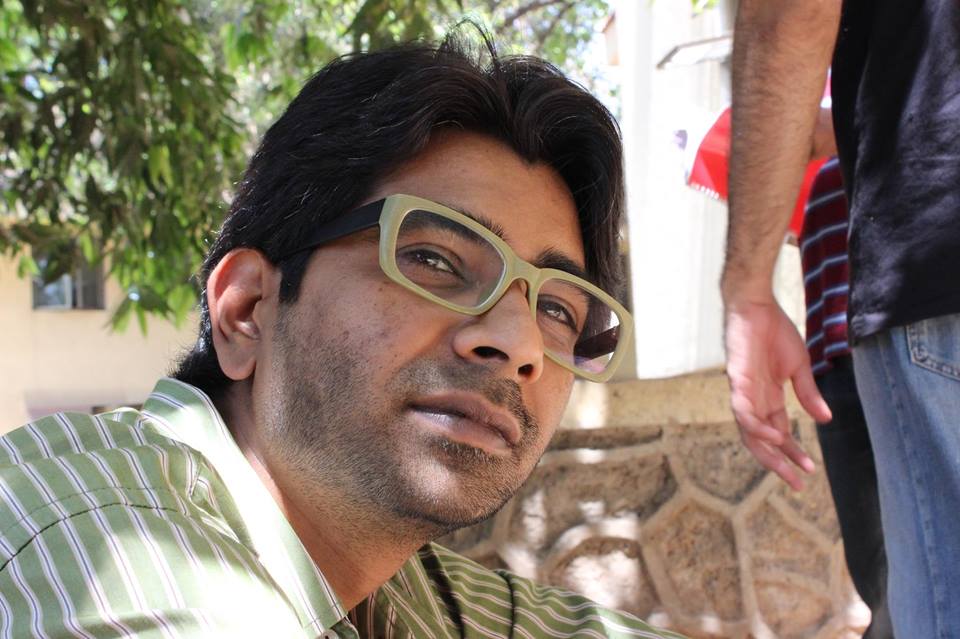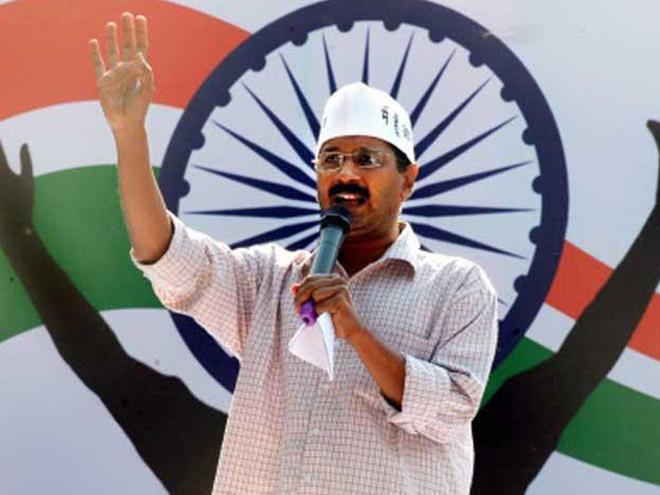Nilesh Kumar
 Introduction
Introduction
This year, the nation is celebrating Dr. Babasaheb Ambedkar’s 125th Birth Anniversary. Dalits, Ambedkarite groups, non-governmental organizations largely run by Dalits, international bodies like United Nations (UN), some national and international universities, political parties like Bhartiya Janata Party (BJP), Hindu organisations like Rashtriya Swayam Sevak Sangh (RSS), Congress, the various state governments – all have announced grand celebrations in the name of Dr. Ambedkar’s birth anniversary in the form of building his statues etc. Since last year, Ambedkarites have been celebrating Ambedkar Jayanti at the Gateway of India (one of the historical places in Mumbai) close to the very famous Taj Mahal Palace Hotel, also one of the most important and posh public spaces in Mumbai. Even this year the celebration happened there and was extended to several other public spaces in the city, like Bandra-Kurla complex (BKC) grounds and other important public auditoriums. A lot of eminent personalities visited these spaces and addressed Ambedkarites on the occasion. The Ambedkar Jayanti celebration has become more than just an Indian phenomenon, for this year Ambedkar Jayanti was celebrated in more than 12 countries by the Dalit diaspora along with the Indian embassies. These grand celebrations will continue throughout the year.
Along with Dalits across the country, political parties and Ambedkarites in the diaspora, even the savarna media commemorated Dr. Ambedkar’s 125th birth anniversary. Many newspapers and magazines dedicated special issues, pages and opinion pieces to Ambedkar, mostly to scrutinize Dalit politicians, organisations and entire Dalit communities. All that mostly meant savarna messiahs going gaga about how urgently we need Ambedkar now! This, after 125 years of his birth. The debates also included talk shows on different news channels, on several topics majorly around who is appropriating Ambedkar and who is not? The co-option of Ambedkar’s ideals like Buddhism, iconisation of Ambedkar from the ‘right’ to the ‘left’ to the ‘centre’, featuring academic ideologues, or political commentators showing their discontent at the ‘appropriation’ of Ambedkar by Dalits and various political parties. Even people on social media trolled Dalits, especially those who have colluded with right wing political parties. In this context, several articles were written and published in several media portals and magazines. Among those, I would like to talk about a particular article published on the online portal First Post which was problematic in many ways.
The Context and the Critique
The article I refer to here is by R. Jagannathan1, “Rescuing Ambedkar from pure Dalitism: He was the best Prime Minister India never had ” which appeared in First Post on April 14, 2015. Let’s begin with the title of the article. The first part of the title “rescuing Ambedkar from pure Dalitism”, doesn’t explain what pure Dalitism is. And if pure Dalitism exists, then it becomes obvious that there is impure ‘Dalitism’ too, so then what is impure Dalitism? Also, the second part of the title, “he was the best Prime Minister India never had” is nothing but Jagannathan’s postulation. Yes, I agree that Ambedkar would have been the best prime minister. But why didn’t Ambedkar become prime minister? Jagannathan’s postulation is a sham, and shows the guilt of not recognizing Ambedkar’s intellectual calibre back ‘then’. Another thing which is not clear from Jaganathan’s piece is that once the non-Dalit upper caste messiahs ‘rescue’ Ambedkar, where will they be restoring him?
Jagannathan fails to acknowledge how history has done grave injustice to Ambedkar. Recently, one of my savarna friends wrote, “I wish there were stories on Ambedkar too in school textbooks as there are on Lincoln”. Why were only Lincoln, Gandhi as a ‘Mahatma’, and his doctrine of satyagraha and non-violence consciously institutionalized in India through texts, statues, memorials and institutions? Nehru, Bose, Savarkar and even the nationalistic rebels like Azad and Bhagat Singh were made part of the history books and school syllabus. The references which emerge clearly show how the freedom movement was completely an upper caste-led project in which Ambedkar was reduced to a ‘leader of the untouchables’. Many liberal, thoughtful Indians in academia and outside academia are ignorant about Ambedkar’s life and work. Ambedkar’s reference comes fleetingly in many of the history books, restricted mostly to polite words of respect for him. Beyond that, Ambedkar remained trapped in the caste world view. Ambedkar’s contributions were consciously given a blind eye by upper caste scholars till the emergence of an Ambedkarite intellectual class.
On the contrary, Jagannathan himself, in another article2 “The Double Tragedy in Rohith Vemula’s Suicide: Dalitism Has Become the New Brahmanism“, states: “all the political parties now court the Dalit vote, and Ambedkar is now the only national icon cutting across all party lines. But radical Dalitists, instead of lauding this trend, want to confine Ambedkar to merely a Dalit icon”. He further says that “the deliberate erection of the Dalit identity in today’s social discourse as inviolable and non-critiquable is no different from the creation of the Brahmin identity in ancient times. Dalits are the new Brahminists of modern day India”.
One fails to understand which Dalitists wanted to confine Ambedkar to merely a Dalit icon? One sees that Jagannathan is constructing the phenomenon that “Dalits are confining Ambedkar to a Dalit icon or Dalits are the Brahminists of modern day India” without any substantial logical evidences. This won’t be hard to understand, given the asymmetrical relationships between Brahmins and Dalits. This characterizes an inverse orientalism either through exaggerating or by caricaturing Dalits Bahujans as malevolent subjects or by producing and reproducing labels for Dalits. The hatred in their bellies is much more than that. It’s more about the rational, logical counter arguments, which the Dalits, the youth and elders alike, who have much reverence for their father, Ambedkar, can furnish each time the caste hindus use their irrational and vicious attacks.
Historically, brahmins have had economic, social and cultural capital and were powerful and educated, and were the first to receive modern English education, which means they had direct access to Ambedkar’s voluminous work. They should have used it to read and understand Ambedkar, but they didn’t pay attention to a single intellectual work of his. Upper castes then, consciously withdrew much of Ambedkar’s work and limited him to an untouchable leader and the architect of the Constitution of India. Even Roy3, who criticizes the nationalist government and Gandhi for trying to steal the legacy of Ambedkar reduces Ambedkar to an ‘untouchable’ leader. For the longest time, no upper caste scholar was ready to engage with Ambedkar and he remained an untouchable doctor till an intellectual class emerged from within Dalits. Anoop kumar writes, “For more than 50 years they kept repeating that Ambedkar was a failure and when they could not hold to this lie anymore, they replaced this lie with another lie – Ambedkar was great, Ambedkarites are failures. I can bet, nowhere else you would find such brutal, very methodical and so persistent efforts of victim-shaming anywhere in the world”.
Jagannathan further writes,“Dalit parties are largely into veneration of Ambedkar, and are essentially tin pot (worthless) dictators who cannot work even with other Dalit parties for a common cause (consider Mayawati, and various factions of the Republican Party of India)“. I don’t understand what is wrong in veneration? And what is the author’s angst against Dalits who revere him or are into veneration? The author can selectively quote Ambedkar to attack Dalits by saying Ambedkar was never into veneration. But, Ambedkar had similar veneration for Buddha. That’s why he was carving a statue of Buddha for himself. For me, the author’s view displays his arrogance and hatred against the Dalit/Dalits parties. Dalits, who helped parties like BSP to grow, kept Ambedkar’s legacy alive in their hearts, minds and homes, on the streets and wadas through celebrations and erecting his suited statues with the Constitution in one hand and the other hand directing his people to march towards the parliament. His abode is in the heart and actions of his true lovers and followers.
Ambedkar’s movement created political consciousness among Dalits, because of which a strong Dalit literature emerged from urban and rural India, especially from Maharashtra in the form of political essays, novels, short stories and popular songs. This literature also reveals various images of Dr. Ambedkar, it makes Dr. Ambedkar a special hero. The process of exaltation, also referred to as ascension, is one wherein a person is uplifted to the status of a deity, whereas an avatars represents the descending of a deity to the earth in the form of a human.. Dr. Ambedkar was a saviour of eighty million people, they idolized him, iconized him, revered him as a god. But there is a rational, scientific, logical contour to their veneration which is very hard to capture for any savarna writer.
Ironically, it is the Hindu society which has nearly 33 crore gods, and crores of god men and women, and all these gods have their own potential god market/s. Some non-Hindus also have other Messiahs to pray to and revere. So I don’t think it is wrong if Dalits in the country have chosen Ambedkar to revere or want to iconize him as God. As Prakash Ambedkar (the grandson of Dr. Ambedkar) says in an interview, “In a society where Bhakti Marg depends on the iconisation of the individual, it is to be expected to a certain extent that Dr. Ambedkar will be iconized“. So what is wrong in reverence with wisdom?
One fails to understand the author’s indictment that “Dalit parties are tin pot dictators and Dalit parties don’t work together for a common cause“. One can debunk the author’s accusation by another counter argument that, if Dalit parties don’t work together than which parties do? Do the Congress or the BJP work together? Do Shiv Sena and BJP work together? Can NCP and Congress work together? Does CPI and other factions of the communist party work together? Can Shiv Sena and MNS work together? Then why should the onus to take the blame lie on the Dalits?
So, why only talk about Mayawati and RPI factions? If their common cause is Dalits, then Dalit parties are working for them, their ways may be different but the goal is the same. It’s obvious they would have political differences. As caste has divided people in India, similarly our political parties are also divided on the bases of caste and other ideological differences. In every critique of Dalit politics, Bahujan Samaj Party’s (BSP) Mayawati’s name goes unmissed. To call Mayawati a Tin Pot dictator reflects the deep misogyny of the author. I think the author fails to recall that Mayawati, despite much opposition, created positions for non-Dalits. BSP constantly shifted its tactics to reinvent the party. In short, it became more electorally oriented but with a strong Dalit identity and Dr. Ambedkar’s ideology at its core. As a result of this, BSP also shifted its slogan from ‘Bahujan’ to ‘sarvajan‘. It is in line with the deep message of Buddhism which Dr Ambedkar had embraced.
The author’s ‘rescue Ambedkar project’ to save Ambedkar from his devoted captors and to save his legacy, is explained thus: “to end the Dalit monopoly of Ambedkar“. Dalits never claimed any monopoly on Ambedkar, whenever they tried such a claim, their voices were sabotaged. In the sociology class where caste is being taught by upper caste professors, Ambedkar is never mentioned. In the political science class, where Indian political theories are being taught by upper caste professors with much respect given to Gandhi, Tilak, Nehru and Patel, Ambedkar is ignored. In the law class, where constitutional law is being taught by upper caste professors, they do so without even a passing reference to Ambedkar. In the history of Economics class, Ambedkar, who believed in a mixed economy and who put forth his economic theories before Keynes, not a professor utters Ambedkar’s name. In the discourse on national freedom movement, Ambedkar doesn’t even get a picture. Till recently, Ambedkar didn’t even have a national memorial, unlike Gandhi or Nehru and other leaders.
It is the Dalit students in the classroom who ensure that his name is not forgotten. They remind the professors about Ambedkar’s contribution to the concerned subject. Dalits, for the longest period of time, were fighting for Dr. Ambedkar’s national memorial. Many Dalit intellectuals have written about Ambedkar’s contribution to economics. The references still go missing from the classrooms. Does that mean that these Dalit students sitting in the classroom or the intellectuals writing on the contribution of Ambedkar are monopolizing Ambedkar? If Dalits for decades have been celebrating Dr. Ambedkar’s birth anniversary and every festival associated with Dalit Bahujan heroes, does that mean that Dalits are monopolising Ambedkar? Then what will you say to these so-called upper caste professors who live in selective amnesia?
In the university campus. when a Dalit boy asserts himself in the classroom, he is cornered by the ultra-left savarna faculty just because the boy reminded them of Ambedkar’s contribution in the making of the constitution. Such incidents are commonly seen and heard in the classrooms and university campuses. In many campuses and institutions, Dalit students started Ambedkar memorial lectures to revisit his work and contributions. It is common that many of the upper caste classmates or colleague stop or limit their interaction with Dalits after knowing that they are Scheduled Castes. On 6th December, the death anniversary of Dr. Ambedkar, when lakhs of Dalits turn up at Dadar to pay their tribute to Ambedkar, it is the savarnas from that locality who go on long vacations. During Ambedkar Jayanti celebrations, I have seen many of my savarna friends posting messages on social media saying, “why these people burn so much firecrackers at odd times” or “why is there so much traffic on the road” From where I see, Ambedkar was kept alive by none other than Dalits.
Please read the next part of the article here.
~
Notes
1. http://www.firstpost.com/politics/rescuing-ambedkar-from-pure-dalitism-he-wouldve-been-indias-best-prime-minister-2195498.html
2. http://swarajyamag.com/commentary/the-double-tragedy-in-rohith-vemulas-suicide-dalitism-has-become-the-new-brahminism
3.http://www.telegraph.co.uk/news/worldnews/asia/india/11535746/Indias-government-trying-to-steal-B.R.-Ambedkars-legacy-says-Arundhati-Roy.html
~~~
Nilesh Kumar is a PhD Research Scholar at Tata Institute of Social Sciences interested in documenting dalit histories and narratives.










